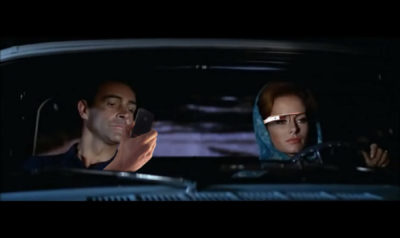 From drinking coffee to eating a donut to putting on makeup or touching up a morning shave, as drivers we’re often guilty of performing “secondary tasks” in our cars. As a result, there’s been an uptick in injuries – and even fatalities – directly tied to distracted driving. And now “wearable technologies” are coming under scrutiny as well.
From drinking coffee to eating a donut to putting on makeup or touching up a morning shave, as drivers we’re often guilty of performing “secondary tasks” in our cars. As a result, there’s been an uptick in injuries – and even fatalities – directly tied to distracted driving. And now “wearable technologies” are coming under scrutiny as well.
While it may seem at first glance that devices such as Google Glass, which include features such as voice control and heads-up displays, are safer to use than hand-held devices, that idea is coming into question as to how it may impact drivers.
A new study, Driving While Interacting With Google Glass: Investigating the Combined Effect of Head-Up Display and Hands-Free Input on Driving Safety and Multitask Performance, has found that such devices may not be as distraction-free as they seem.
The authors of the report, Kathryn Tippey, Elayaraj Sivaraj, and Thomas Ferris, say they used data collected from the performance of more than 20 users of a driving simulator who were asked to engage in four driving tasks. Using a driving only baseline to provide a control, the drivers were then tasked with driving plus reading and responding to text messages using three separate technologies: a smartphone keyboard, a smartphone “voice-to-text system” and the Google Glass’s voice-to-text system and a head-up display.
The research was aimed at investigating to what extent driving performance is affected by devices used to take on secondary tasks. The researchers say they expected “a positive impact on driving performance” from using hands-free systems.
What they found was that driving task performance was degraded with the addition of the secondary texting task, and while the voice-to-text input supported relatively better performance in both driving and texting tasks compared to using manual entry. The HUD functionality, the study suggested, despite the performance costs of texting-while-driving, found that voice input methods improved performance over a manual entry and that using head-up displays “may further extend those performance benefits.”
The authors say they found that manual entry of texts led to slower reaction times and cranked up the number of “eyes-off-road glances” when compared to voice-to-text input using either a smartphone or Google Glass. The HUD function required only a slight change in eye direction to read and respond to text messages as opposed to a more disruptive change in head and body posture. The study participants also said they found Google Glass easier to use and that it interfered less with driving than did the other devices they tested.
The research was done by a team at the Center for Research and Innovation in Systems Safety at the Vanderbilt University Medical Center.
“Our evidence suggests that adding voice input and using an HUD can make secondary tasks like texting while driving less unsafe,” Tippey says. “However, regardless of entry or display method, it is not safe to perform these types of secondary task while driving in environments where the workload from driving is already heavy.”
NHTSA data has revealed that more than 30 percent of all car the crashes in the United States involved drivers who admitted to texting right before their accidents, and that with such accidents have come an increased number of personal injury insurance claims and lawsuits.
It might also be a good idea to consider what getting caught texting-while-driving might cost you. Texting fines are radically different depending on where you live, and drivers may pay a small fine or a very large fine according to where the incident happens. While in California, a first-time offender might be fined just $20 for an infraction, the same violation might leave a driver facing a $10,000 fine and up to a year in prison in Alaska.











